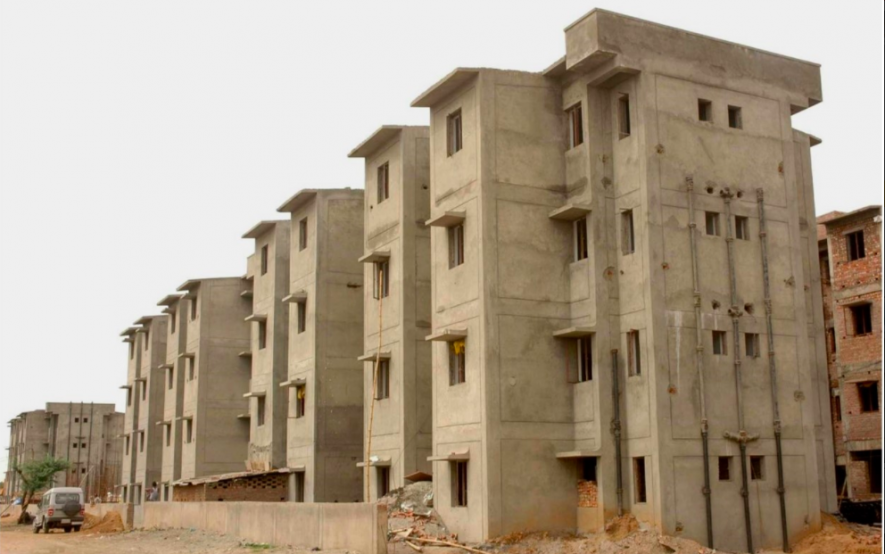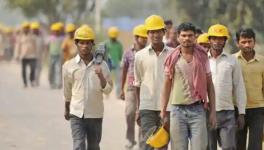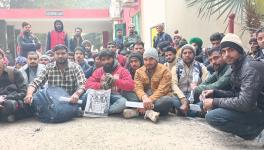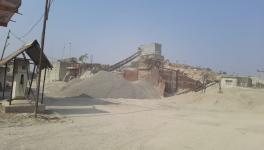Modi Government's New Housing Scheme Likely to Achieve Little

Photo Courtesy: http://arhc.mohua.gov.in/
During India's nationwide lockdown in March, April and May, lakhs of workers set out to walk home hundreds or thousands of kilometers on the country's highways, a terrible testimony to desperation that captured media attention both at home and abroad. For the first time in recent history, the precarious and unsafe conditions under which migrant workers live and work were the subject of national debate. Many hoped that the sheer scale of this human tragedy would result in a policy or political response commensurate with what it revealed about our cities.
However, this does not seem to have been the case in practice. Following a study of the housing conditions of migrant workers in three states (Gopalakrishnan et al, forthcoming), we used what we found in that study to consider the likely effectiveness of the only national policy response that specifically sought to address this problem — the Central government's Affordable Rental Housing Complexes (ARHC) scheme (you can see the scheme's guidelines here). Unfortunately, it seems unlikely that the scheme will have any significant effect.
Announced in July, the ARHC scheme, according to the Ministry of Housing and Urban Affairs, is "expected to benefit 3,00,000 workers initially". The Ministry's guidelines say the scheme is "a pro-poor and significant step for urban migrants/ poor... This initiative is being taken up for the first time in the country to improve their living conditions and obviate them from staying in slums, informal settlements or peri-urban areas ... ARHCs aim at creating vibrant, sustainable and inclusive affordable rental housing avenues for urban migrants/ poor by ‘aggregation of their demand at a given site'." The scheme is part of the Pradhan Mantri Awaas Yojana (PMAY).
The scheme broadly provides for two "models" of affordable rental housing - Model 1 consists of repurposing vacant housing built under the PMAY or its predecessor, the JNNURM (Jawaharlal Nehru National Urban Renewal Mission), and Model 2 consists of new housing that is to be purpose built for the scheme. In both Models, the housing is to be administered by private concessionaires. The rent rates are to be fixed by urban local bodies in the case of Model 1 facilities and by the private concessionaires (based on a 'local survey') in the case of Model 2 facilities. Annual rates of increase in rent are capped at a maximum of 20% in the first five years, and "the same mechanism shall be followed for the duration of the contract [i.e. 25 years]." The scheme also says that concessionaires will be given various tax and other concessions — these are discussed in more detail below.
At first glance, this appears to be a useful scheme intended to address one of the major lacunae in prior public housing efforts — the lack of attention to rental housing (almost all prior schemes, the PMAY included, have focused solely on building houses for ownership). But, in reality, the scheme has serious shortcomings.
For a start, contrary to appearances, the scheme provides very little in the way of actual financial support. Under Model 1, the scheme requires state governments to use funds already granted under the PMAY/JNNURM for 'viability gap funding' if required. Moreover, if these funds are not required, the State governments have to return those prior grants with interest (para 10.d). For Model 2, which envisions entirely new construction, the only Central assistance offered is a grant for use of "innovative & alternate technology". At a time when state governments' finances are in a parlous state, this effectively means that it is unlikely this scheme is going to result in additional public or private investment, under either model.
Moreover, the scheme appears to be based on unrealistic assumptions that do not address the actual problems with the housing that workers currently are able to access. The Model 1 route — repurposing of vacant housing built under prior schemes — does not ask why this housing is unoccupied. When there is desperate demand for housing, the most likely reason that public housing would be unoccupied would be because it is unsuitable for use by workers — located in the wrong area, too small, lacking basic facilities, or simply unfit for habitation. Converting this to rental housing will not address any of these problems.
On top of this, the scheme's financial projections — provided in Annexure 5 of the guidelines — do not seem realistic. In a recent survey of 349 workers across three states by our research collective, we found that the vast majority of daily wage worker families we surveyed lived in homes with rents between Rs 2,000 and Rs. 3,000 per month in Delhi and Rs. 1,500 to Rs. 2,500 in Dehradun. But in the ARHC scheme's financial projections for Model 1 housing in these two cities, the rents in Dehradun are expected to start from Rs. 2,500 per month and those in Delhi from Rs. 3,000 a month — implying that, based on our data, many workers will find these 'affordable' houses unaffordable. Beyond this, the rent for dormitory beds in Model 2 housing is projected to be Rs. 3,000 a month — a rate roughly three to four times higher than single workers in Dehradun, for instance, pay at present for shared rooms.
Also read: Why India Should Recall Ambedkar’s Ideas on Economy
In addition, our survey found that housing-related problems faced by daily wage and migrant workers are not limited to the availability of houses, but also include the lack of public services, sanitation, access to rations and affordable basic supplies. More than two thirds of our interviewees reported, for instance, that shopkeepers and vendors near their bastis charged higher rates for rations and groceries, since the sellers know that workers usually have no independent transport and often lack local ration cards, and hence would have little option but to buy from them. But the ARHC guidelines, aside from stipulating a minimum floor area, do not say anything about other infrastructure other than vague language saying "ARHCs will include on-site infrastructural developments (para 7(j))." There is no provision for what is to be done if these are not met.
This overall approach is then paired with a framework that provides an extraordinary level of concessions to private concessionaires. It is important to first note that the "repurposing" proposed under the scheme (in Model 1) amounts to handing over housing built with public funds to private entities. Moreover, under both Models, the private concessionaire is to be given near complete exemption from income taxes and GST (profits and gains from the scheme are to be treated at par with rental from residences), as well as access to priority sector lending and the Affordable Housing Fund. State governments are expected to provide "trunk infrastructure facilities like road, sanitation services, water, sewerage/septage, drainage, electricity etc. up to project site ... without any additional cost to Concessionaire" (para 6A(xv)(b)). When state governments have already failed to provide these facilities in most slums, why would they do so under this scheme, that too for the benefit of a private developer?
The concessions are not limited to taxes and financial benefits. The guidelines also state that the ARHC facilities will be "kept out of the purview of existing State Rental Laws." In addition, the concessionaire "will have eviction rights during the contract period and his decision will be considered final"; tenants must vacate their premises "without any dispute." There is no provision for dispute settlement and no recourse for tenants - they are essentially at the mercy of the concessionaire.
India has had several experiences with policies of this kind. In the name of 'employment' or 'infrastructure generation', land and public property are handed over to private developers, they are given sweeping concessions and unfettered powers, and State governments are directed to reorient their infrastructure provision to serve these developers' interests. Rather than encouraging any real generation of infrastructure, such exercises often become hubs for speculators and profiteers (as in the case of Special Economic Zones). In effect, the state seeks to walk away from its responsibility to provide basic facilities and shelter, and in the process makes the situation worse than better.
It is a dark reflection on our policymakers that what is said to be the largest human migration since Partition still did not make any dent in their continued endorsement of approaches like this. The result is likely to be that crores of daily wage and migrant workers will still have to struggle for the basic facilities that, by now, they should have been able to take for granted.
The author is a member of the KISLAY Social Research Collective which studies unorganised, understudied and new forms of production, labour and social action. The study on housing of daily wage workers mentioned in this article was supported by the Rosa Luxemburg Stiftung.
Also read: India’s “Smart” Vaccine Campaign is Absolutely Dumb
Get the latest reports & analysis with people's perspective on Protests, movements & deep analytical videos, discussions of the current affairs in your Telegram app. Subscribe to NewsClick's Telegram channel & get Real-Time updates on stories, as they get published on our website.
























